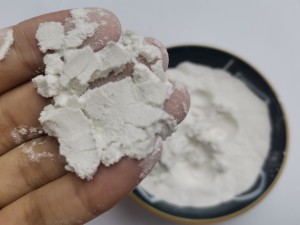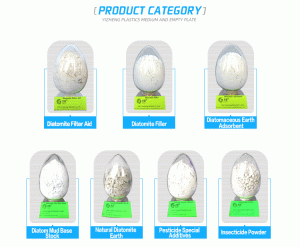In diatomite sewage treatment projects, various processes such as neutralization, flocculation, adsorption, sedimentation and filtration of sewage are often carried out. Diatomite has unique physical and chemical properties. Diatomite can promote the neutralization, flocculation, adsorption, sedimentation and filtration of sewage suspended solids in the sewage treatment process through different modification processes such as pulverization, drying, selection and calcination. Function.
The basic principle of diatomite sewage treatment:
1. Inter-particle dipole interaction: The surface of diatomite particles is charged and can adsorb dipolar molecules (atoms) of polar media, causing these dipole molecules (atoms) to spontaneously unipolar orientation on the surface of diatomite. When the diatomite is put into the sewage, the original polarity balance of the sewage system is broken, and the dipole force acts to promote the association of colloidal particles and polar molecules (atoms) in the sewage on the surface of the diatomaceous earth to form agglomerations. Easy to separate.
2. Flocculation: Flocculation is a process in which small particles or agglomerates of small particles generate larger flocs. Adding modified diatomaceous earth to the sewage and performing agitation and aging treatment of the dispersion system can quickly form stable large flocs of harmful substances in the sewage. This is a major breakthrough in solid-liquid separation of sewage, which not only reduces pollution control costs, but also improves separation efficiency.
3. Adsorption: Adsorption is a surface effect. The surface of diatomaceous earth with large dispersion has a large surface free energy and is in a highly thermodynamically unstable state, so it has a tendency to adsorb other substances to reduce surface energy. Diatomaceous earth can adsorb the flocculation group, some bacterial viruses and ultra-fine particulate matter in the sewage to the inner and outer surface of the diatom body, forming a large particle group centered on the diatom body. In addition, diatomaceous earth is also a good medium for microorganisms, so it is a good carrier for microbial agents in sewage biochemical treatment projects.
4. Filtration: Diatomite is relatively incompressible. After a certain modified diatomite is added to sewage, it can quickly settle to form a solid porous filter bed, which is convenient for sludge dewatering and slag removal treatment. The sewage is filtered through the filter bed so that large viruses, fungi, flocculation groups, and particles are intercepted and filtered out in the process. The series of diatomite sewage treatment agents produced by our company using modified technology are widely used in the treatment of industrial and urban sewage. Users can choose one or more composite trials according to specific conditions to achieve the desired effect.
The white soil is named after the gray-white white pulp layer under the humus layer. Distributed in the eastern mountain basins and valleys of Northeast China, the climate is humid, and the vegetation type is hygroscopic shallow-rooted plants. The accumulation of soil organic matter is less than that of black soil. Due to the poor decomposition of organic matter, it often has peatification characteristics. The content of organic matter in the surface layer of albic soil Up to 8-10%, the texture under the albic layer is mostly heavy loam and clay; the albic layer is relatively light in texture, and the iron leaching is very obvious. The clay mineral is mainly hydromica with a small amount of kaolinite and amorphous substance.
 Diatomaceous earth is composed of amorphous SiO2, and contains a small amount of Fe2O3, CaO, MgO, Al2O3 and organic impurities. Diatomaceous earth is usually light yellow or light gray, soft, porous and light. It is commonly used in industry as insulation materials, filter materials, fillers, abrasive materials, water glass raw materials, decolorants and catalyst carriers. The special porous structure of natural diatomaceous earth can be observed under the microscope. This microporous structure is the reason for the characteristic physical and chemical properties of diatomaceous earth. The main component of diatomaceous earth as a carrier is SiO2. Diatomaceous earth is generally formed by the remains of silicate after the death of single-celled algae collectively called diatoms, and its essence is water-containing amorphous SiO2. Diatoms in fresh water and There are many types of diatoms that can survive in salt water. Generally, they can be divided into “central order” diatoms and “plumbing order” diatoms. In each order, there are many “genus”, which is quite complicated. The main component of natural diatomaceous earth is SiO2, the high-quality ones are white in color, and the SiO2 content often exceeds 70%. Monomer diatoms are colorless and transparent. The color of diatomaceous earth depends on clay minerals and organic matter. The composition of diatoms on different mineral sources is different. Diatomaceous earth is a fossilized diatomaceous earth deposit formed after the death of a single-celled plant called diatom after an accumulation period of about 10,000 to 20,000 years. Diatoms are one of the first protists to appear on the earth, living in sea water or lake water. It is this diatom that provides oxygen to the earth through photosynthesis and promotes the birth of humans, animals and plants.
Diatomaceous earth is composed of amorphous SiO2, and contains a small amount of Fe2O3, CaO, MgO, Al2O3 and organic impurities. Diatomaceous earth is usually light yellow or light gray, soft, porous and light. It is commonly used in industry as insulation materials, filter materials, fillers, abrasive materials, water glass raw materials, decolorants and catalyst carriers. The special porous structure of natural diatomaceous earth can be observed under the microscope. This microporous structure is the reason for the characteristic physical and chemical properties of diatomaceous earth. The main component of diatomaceous earth as a carrier is SiO2. Diatomaceous earth is generally formed by the remains of silicate after the death of single-celled algae collectively called diatoms, and its essence is water-containing amorphous SiO2. Diatoms in fresh water and There are many types of diatoms that can survive in salt water. Generally, they can be divided into “central order” diatoms and “plumbing order” diatoms. In each order, there are many “genus”, which is quite complicated. The main component of natural diatomaceous earth is SiO2, the high-quality ones are white in color, and the SiO2 content often exceeds 70%. Monomer diatoms are colorless and transparent. The color of diatomaceous earth depends on clay minerals and organic matter. The composition of diatoms on different mineral sources is different. Diatomaceous earth is a fossilized diatomaceous earth deposit formed after the death of a single-celled plant called diatom after an accumulation period of about 10,000 to 20,000 years. Diatoms are one of the first protists to appear on the earth, living in sea water or lake water. It is this diatom that provides oxygen to the earth through photosynthesis and promotes the birth of humans, animals and plants.
Post time: Aug-12-2021



